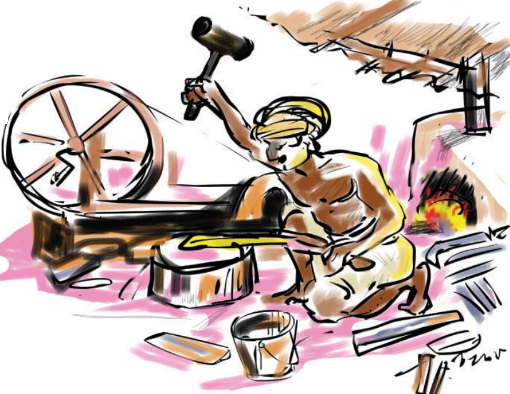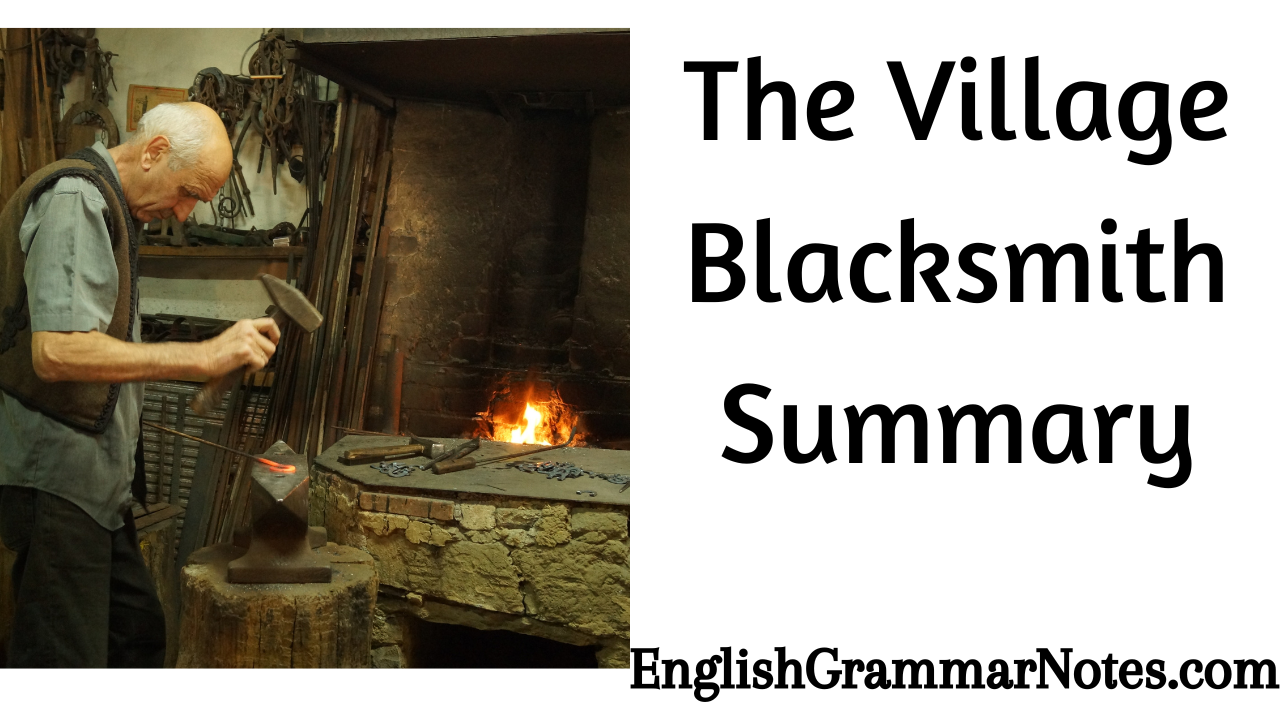“The Village Blacksmith” is a well-known poem by Henry Wadsworth Longfellow, published in 1841. This timeless poem celebrates the life and virtues of a rural blacksmith and offers a glimpse into his daily routine and character. The Village Blacksmith Short Summary through vivid imagery and strong rhythm, Longfellow portrays the blacksmith as a symbol of strength, integrity, and hard work, making this poem a classic in American literature. Read More Summaries Class 8 English Summaries.
The Village Blacksmith Summary
The Village Blacksmith Summary in English
The poet here describes a village blacksmith with his experiences of the past and the present. He was a strongman and had large and sinewy hands. His muscles were as strong as iron. His hair was crisp, black and long. His brow was wet with sweat because he worked hard and earned whatever he could. He looks at the world with pride because he is not indebted to anyone. He works continuously and the sound of the bellows and the beating of the iron are heard in the air. His beating of the iron is as rhythmic as the ringing of the church bell in the evening. Children returning from school curiously watch the blacksmith’s bellows. They try to catch the burning sparks.

The blacksmith goes to church on every Sunday and takes part in prayers and listens to the sermon. He hears his daughter’s voice in the choir and is delighted. He feels that he is hearing the singing of his dead wife from heaven. After completing his day’s work he goes to sleep at night. The poet thanks the blacksmith. He has taught him a good lesson like an intimate friend. Our fortunes have to be formed from the flaming forge of life. Our thoughts and deeds should be shaped from the sounding anvil.
Conclusion:
In conclusion, Henry Wadsworth Longfellow’s “The Village Blacksmith” is a heartwarming tribute to the noble qualities of hard work, honesty, and resilience embodied by the blacksmith. The Village Blacksmith poem’s enduring appeal lies in its ability to convey a sense of admiration for ordinary, everyday heroes who contribute to the betterment of their communities. Longfellow’s skillful use of imagery and rhyme immortalizes the blacksmith as a symbol of unwavering dedication and virtue.
Read Summary:
